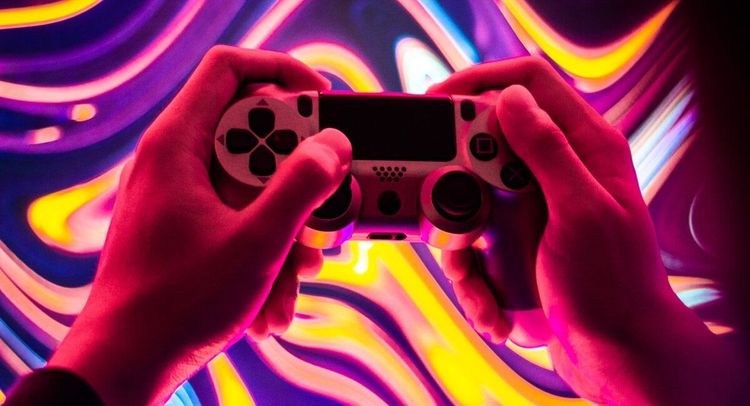
How Blockchain Technology and Interoperable Assets Is Changing Video Game Design
The video games market is a global titan, being valued at nearly $200 billion and set to grow below $305 billion by 2029. Being a field that’s routed in technology, gaming is continuously adapting and incorporating new technological advancements to make its games even better. Over the past 18 months, we’ve seen this trend with the implementation of blockchain technology into gaming. By using blockchain tech, video games can host digital assets within their system. These can come in many forms, molding to the specific game arena within which they’re hosted. For example, one game could import NFT clothing that characters can wear, trade, and buy. Other systems could create the foundations of their games with blockchain technology, making a trading card game that runs on assets. We’ve seen a number of exciting blockchain gaming projects spring up, as well as major AAA and indie titles incorporating blockchain assets to bring something new to the table. As blockchain technology has developed further, the breadth of functions it has within the world of gaming has similarly increased. Of this development, the boost of interoperability across different blockchain ecosystems has allowed video games to share assets across different games and systems. ReneVerse has been able to create whole interconnected ecosystems of digital assets that game developers can take advantage of. In this article, we’ll dive into the incredible impact blockchain technology is making on this field, demonstrating why gaming is set to move through another revolution. The Integration of Interoperable Assets For the past few years, video games have been experimenting with the integration of digital assets into their games. Beyond just having unique items in a game, hosting these on the blockchain opens up the game to a realm of new possibilities, allowing players to trade, buy, sell, or loan out the assets they have in-game. By creating a secondary market within a game, it is able to bring more attention to it, as it can convert into a Play2Earn economy.
What’s more, players have a secondary motive to play as they can earn money, going beyond just playing solely for entertainment. However, the main problem with this system is that for a long time, most blockchain networks did not support interoperability, limiting the extent to which players could use and trade these assets across environments. However, recent developments have changed this completely, allowing blockchain environments to intercommunicate. With existing bridges and links between ecosystems, users can now send their assets across different games, creating a more advanced system of commerce for all. Beyond just benefiting players, the increase in the availability of interoperable assets has also led to development teams being able to incorporate advertisements into their games. Businesses can create billboard assets on interoperable systems, allowing developers to then place them directly into their games. This flexible advertising system has radically changed the possibility of working in distinct revenue streams into gaming. For example, a game studio could include a range of billboard assets in their game. If a player decides to put those billboards on their land and a player sees them and eventually engages with that product, we could use blockchain technology to trace these payments and attribute money fairly across the chain of interactions. As the Unreal engine continues to develop, the level of flexibility and customization that we could bring to these digital assets will only increase. Over time, integrating interoperable assets will revolutionize how both developers and players interact with game systems and profit from them.
What Could the Future of Game Development Look Like? As blockchain technology continues to develop, it’ll only become easier for developers and game designers to rapidly create and integrate interoperable assets. Especially as blockchain systems increase their ability to share assets across networks, this will unlock a whole potential world of opportunities for developers. Beyond the aforementioned billboards or in-game items, interoperable assets could create strong links between different games. For example, one video game could port assets from another, creating easter eggs that drive player engagement. What’s more, the ability to rapidly mix and match assets will allow for a new era of cross-game collaboration. For example, the ReneVerse platform has an entire asset catalog that developers can insert into their games. By using these assets, the gaming community can further strengthen inter-game relationships, as well as forge an entirely new economic market around gaming. As interoperability increases, the relative value of these created assets will also increase, as they can be deployed into more environments. This strategy is rapidly evolving, with the perfect unification across the Unreal Engine, blockchain technology, and asset providers like ReneVerse creating a fantastic opportunity for developers. Final Thoughts The world of gaming is entering an extremely exciting era, one defined by possibility and the potential to change interactive gaming as we currently know it. Blockchain technology is poised as a destructive force in this area, helping to facilitate faster development cycles and a set of rich opportunities for both users and developers alike. We’re likely going to see rapid progress in this field over the next few years, with additional developments, widespread adoption, and spiked user interest forging a new, interactive, and community-led gaming system. While huge steps have already been made, the advancement of interoperable assets will further revolutionize the gaming field and provide a plethora of new opportunities.
Source : [How Blockchain Technology and Interoperable Assets Is Changing Video Game Design] CoinCodex / June 27, 2023